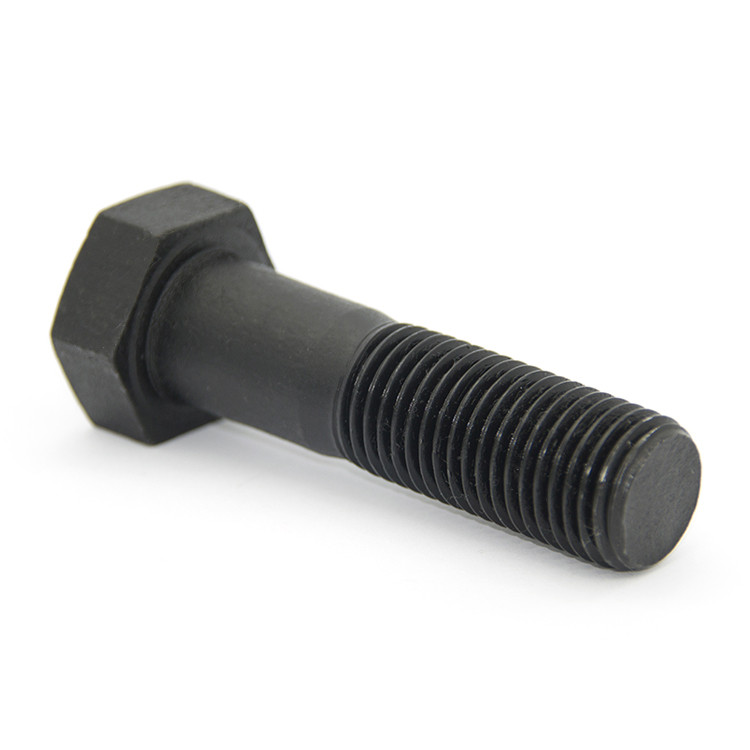Understanding BS Flange Head Bolts and Their Applications in Engineering Projects
Nov . 04, 2024 10:42 Back to list
Understanding BS Flange Head Bolts and Their Applications in Engineering Projects
Understanding BS Flange Head Bolts Applications, Benefits, and Specifications
Flange head bolts, specifically those conforming to British Standard (BS) specifications, are critical components in various engineering applications. They feature a distinctive flange at their head, providing increased surface area for load distribution, which is essential in numerous mechanical and structural contexts. This article aims to explore the characteristics, benefits, applications, and specifications of BS flange head bolts.
What are BS Flange Head Bolts?
BS flange head bolts are types of fasteners that consist of a bolt with a wide, circular flange machined at the head. This design minimizes the risk of damage to the material being fastened, as the flange distributes the clamping force over a broader area compared to traditional hex-head bolts. Such bolts typically adhere to British Standards, ensuring consistent mechanical properties and performance.
Key Specifications
The BS standard that most commonly governs flange head bolts is BS 3692, which outlines the dimensions, tolerances, and mechanical properties of various types of bolts. Flange head bolts under this standard are available in different sizes, grades, and materials, including carbon steel, stainless steel, and alloy steel, catering to various environmental and loading conditions.
Common specifications include
- Diameter Flange head bolts are available in numerous diameters, usually ranging from M6 to M30 or larger, depending on the application requirement. - Strength The bolts are categorized into different grades (e.g., 8.8, 10.9, and 12.9 for carbon steel) based on their tensile strength and yield strength, crucial for ensuring performance under load. - Coatings Many flange head bolts are treated with coatings (such as zinc plating) to enhance resistance to corrosion and wear, extending their service life in extreme environments.
Benefits of Flange Head Bolts
1. Load Distribution The flange increases the surface area that comes into contact with the connected materials, which helps to distribute the load more evenly. This feature reduces the likelihood of material deformation and failure.
bs flange head bolts

2. Ease of Installation Flange head bolts are easier to install in confined spaces as they do not require a nut. The flange head acts similarly to a washer, providing adequate grip and reducing the need for additional components.
3. Vibration Resistance The increased surface area and the ability to lock the materials in place provide better resistance to loosening caused by vibrations, making them ideal for applications in automotive and machinery sectors.
4. Aesthetic Appeal In certain applications, such as furniture or architectural structures, the flange head provides a more finished appearance compared to traditional bolts, enhancing the overall look of the product.
Applications of BS Flange Head Bolts
BS flange head bolts have a wide array of applications across various industries
- Construction Used in structural assemblies, they provide critical fastening for beams, columns, and trusses, ensuring stability and safety in buildings and bridges. - Automotive In vehicles, flange head bolts are employed in engine components and chassis assemblies due to their strength and reliability under fluctuating loads. - Manufacturing Flange head bolts are commonly used in machinery and industrial equipment for assembling parts that must endure significant wear and stress.
- Aerospace The aerospace sector utilizes these bolts for their lightweight yet strong properties, essential for ensuring the safety and performance of aircraft structures.
Conclusion
BS flange head bolts are indispensable fasteners that offer numerous advantages in load distribution, ease of installation, and aesthetic appeal. Their compliance with stringent British Standards ensures high quality, making them suitable for a variety of demanding applications across multiple industries. With a range of materials, sizes, and specifications available, they provide the necessary versatility to meet diverse engineering challenges. Understanding these attributes allows engineers and professionals to make informed choices when selecting fasteners for their projects, ensuring both performance and reliability in their work.
Latest news
-
Premium Wire Bolts Suppliers | High-Quality Bolts
NewsAug.05,2025
-
Trusted Wire Bolts Suppliers - Durable & Reliable Solutions
NewsAug.04,2025
-
Wire Bolts Company | Premium Industrial Fasteners
NewsAug.03,2025
-
Top Wire Bolts Suppliers | AI-Optimized Fast Delivery
NewsAug.02,2025
-
Top Metric Wood Screw Companies | Durable & Reliable
NewsAug.01,2025
-
Premium Lawn Mower Handle Bolts Supplier | Fast Delivery
NewsJul.31,2025
